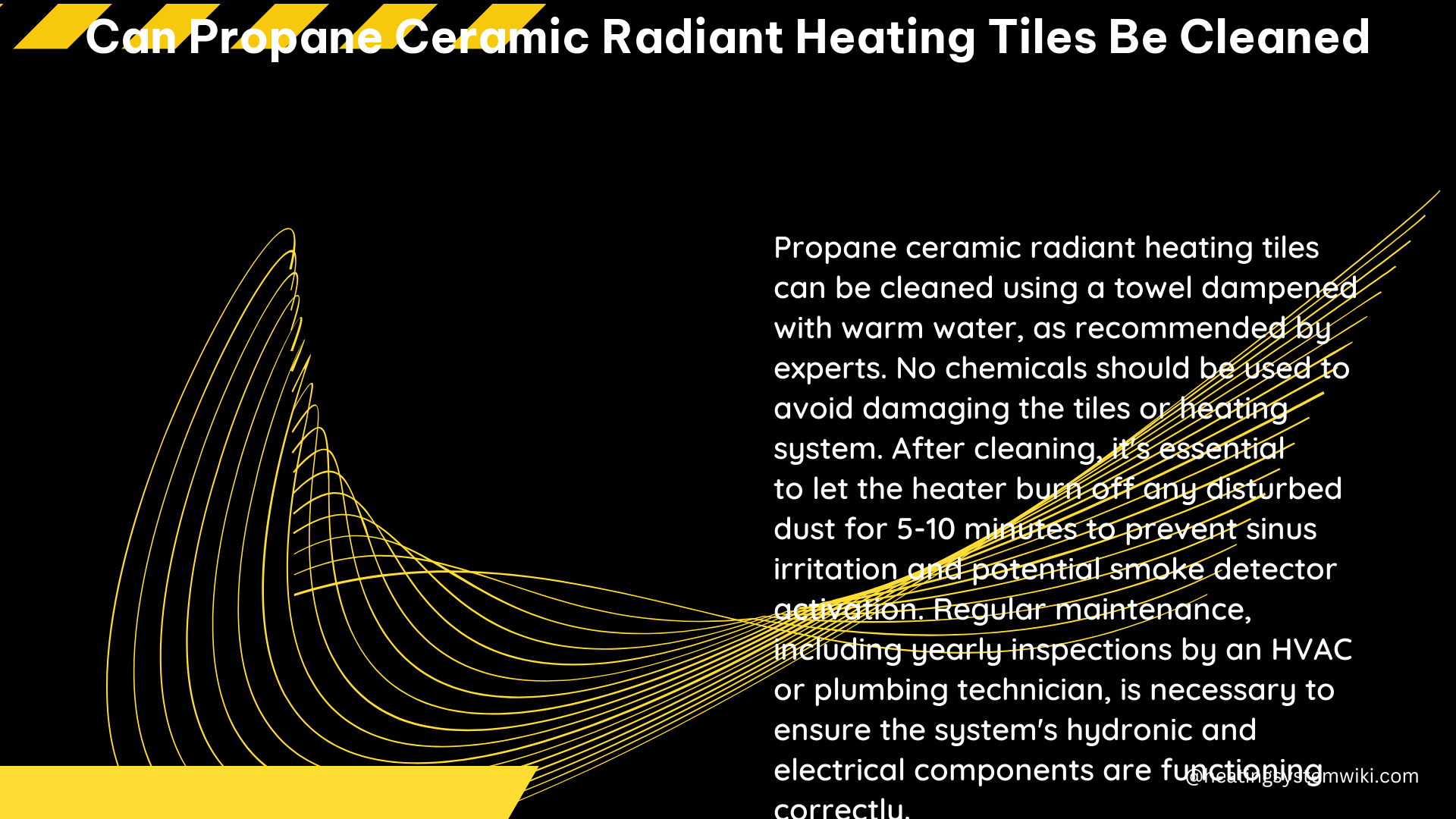Ceramic radiant heating tiles, also known as hydronic or warm water systems, use hot water that runs through pipes to create heat. These tiles are known for their energy efficiency and ability to distribute heat evenly throughout a room or space. However, it is important to note that these tiles can accumulate dust and debris over time, which can affect their performance and efficiency.
Cleaning Ceramic Radiant Heating Tiles
To clean ceramic radiant heating tiles, it is recommended to use a soft, lint-free cloth or towel dampened with warm water to wipe down the tiles and remove any accumulated dust or debris. It is important to avoid using any kind of chemicals, as they can damage the tiles or the heating system.
When cleaning the tiles, it is important to be gentle and avoid applying too much pressure, as this could potentially damage the tiles or the heating elements underneath. It is also recommended to clean the tiles on a regular basis, such as once a month or every few months, to prevent the buildup of dust and debris.
After cleaning, it is recommended to let the system burn off any dust or debris that may have been disturbed during the cleaning process. This can be done by running the heating system at a higher temperature for a short period of time, typically around 30 minutes to an hour.
Repairing and Maintaining Ceramic Radiant Heating Tiles

It is also important to note that any repairs or maintenance to the tile or grout should be performed by a licensed general contractor with experience in repairing/replacing tile flooring and radiant floor heat systems. This is to ensure that the heating elements underneath are not damaged during the repair process, which could render the system inoperable and require major repairs or replacement of flooring and heating system components.
When it comes to repairing or maintaining ceramic radiant heating tiles, it is important to consider the following factors:
-
Tile Condition: Inspect the tiles for any cracks, chips, or other damage that may require replacement. Damaged tiles can affect the overall performance and efficiency of the heating system.
-
Grout Condition: Check the grout between the tiles for any cracks or deterioration. Damaged grout can allow water to seep into the system, which can lead to further damage and potential system failure.
-
Heating Element Condition: Ensure that the heating elements underneath the tiles are functioning properly and are not damaged. Any damage to the heating elements can result in uneven heating or system failure.
-
Insulation Condition: Verify that the insulation layer underneath the tiles is intact and providing adequate thermal insulation. Damaged or insufficient insulation can reduce the efficiency of the heating system.
-
Pipe Condition: Inspect the pipes that carry the hot water through the system for any leaks or damage. Leaks can lead to water damage and system failure.
By addressing these factors and performing regular maintenance, homeowners can ensure that their ceramic radiant heating tiles continue to function efficiently and effectively.
Technical Specifications of Ceramic Radiant Heating Tiles
In terms of technical specifications, ceramic radiant heating tiles typically consist of the following layers:
-
Compacted Sand: The bottom layer of the tile is a compacted sand base, which provides a stable foundation for the heating system.
-
Insulation: Above the sand base is a layer of insulation, typically made of rigid foam or other insulating materials. This layer helps to prevent heat loss and improve the efficiency of the heating system.
-
Tubing and Concrete: The heating elements, in the form of tubing, are embedded in a concrete layer above the insulation. This concrete layer helps to distribute the heat evenly throughout the tile.
These tiles are known for their ability to conduct heat well and distribute it evenly throughout a space, making them a popular choice for radiant floor heating systems. However, it is important to note that some floor coverings may work better with radiant floor heat than others. For instance, ceramic tiles warm up nicely and distribute heat evenly, while carpets act like insulation and can make it more difficult for heat to get into the room.
Conclusion
In summary, ceramic radiant heating tiles can be cleaned with a soft, lint-free cloth or towel dampened with warm water, but it is important to avoid using any kind of chemicals. Any repairs or maintenance should be performed by a licensed professional to ensure that the heating elements are not damaged. These tiles are known for their ability to conduct heat well and distribute it evenly throughout a space, making them a popular choice for radiant floor heating systems.
References:
– How I clean a Ventless Wall Heater – YouTube, https://www.youtube.com/watch?v=7Pq_R5hv6zw
– How to Maintain Heated Floors – Revivify Surface, https://revivifysurface.com/how-to-maintain-heated-floors/
– Radiant Floor Heating | Types, Maintenance and More | Square One, https://www.squareone.ca/resource-centres/getting-to-know-your-home/radiant-floor-heating
